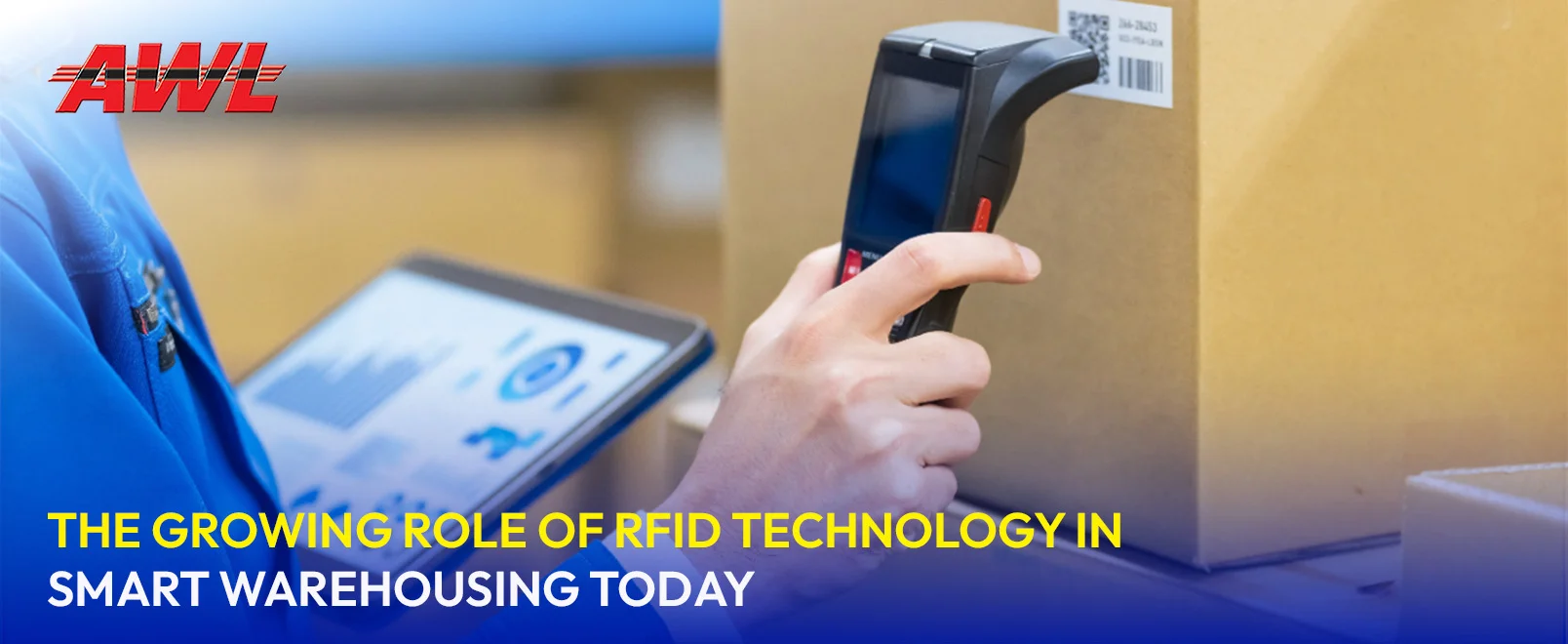

Warehouses have always been about storage and movement. Goods arrive, stay for a while, and then move out again. Simple as that. But over time, expectations changed. Customers now want faster delivery, accurate updates, and zero errors. Add to this the rising costs of global trade and the pressure on supply chains, and it is clear why warehouses need to be smarter.
One of the technologies making this possible is RFID. Radio Frequency Identification is not a new concept. Retailers and manufacturers have used it for years. What is different today is how deeply it has entered warehousing. It has gone from being a support tool to a central part of operations. In many ways, it is now the backbone of smart warehouse design.
Why the Old Methods Fall Short
For decades, barcodes were enough. Scan a box, update the record, and move it to the next stage. But barcodes need direct visibility. Each item has to be scanned one by one. In a warehouse with thousands of products moving in and out every day, that process becomes slow and unreliable.
Manual entry is worse. A single mistake in typing can throw off inventory numbers. Stockouts happen. Customers face delays. Businesses lose trust. In today’s fast-paced trade world, these mistakes are costly.
RFID as a Game Changer
This is where RFID steps in. An RFID warehouse system allows multiple items to be read at once without direct contact. Imagine a pallet moving through a gate. Every tag on that pallet is read in seconds. No need for workers to scan each box. The information goes straight to the system, updating stock in real time.
The result is speed and accuracy. Managers know exactly what they have and where it is. Workers waste less time searching. Errors drop. Customers see more reliable service.
Better Visibility of Stock
Keeping accurate inventory has always been a challenge. Shelves filled with goods often hide problems. Traditional counts can miss damaged or misplaced stock. By the time errors are noticed, it is too late.
With an RFID inventory management system, this issue reduces drastically. Every time products move, the system records it. When new stock enters, the update happens instantly. When items leave for delivery, numbers adjust without delay. The warehouse finally has a live, clear picture of inventory.
More Than Just Counting
RFID is not only about knowing quantities. It is about making the whole operation efficient. An RFID warehouse management system automates many daily tasks. From receiving to dispatch, it keeps the flow steady.
Take unloading as an example. A truck arrives with goods. Instead of opening boxes and scanning each code, RFID readers confirm the shipment almost instantly. The same speed applies when goods are leaving. Orders can be verified against records without long checks.
Tracking Inside the Warehouse
Every warehouse has its maze of aisles and racks. Finding a specific item can be frustrating. An RFID warehouse tracking system fixes this problem. Managers know where each product is located. Workers can pick orders faster. Mistakes in packing are reduced.
This level of detail also helps with planning. Managers can see which sections are filling too fast or which shelves are underused. Space is used better. Operations become smoother.
Impact on the Bigger Supply Chain
RFID also connects the warehouse with the larger supply chain. Goods can be tracked as they move to transport hubs, retailers, or end customers. If there is a delay at customs or a problem at a port, the system shows it in real time. Businesses can respond quickly instead of waiting for reports after the damage is done. In a world where trade disruptions are common, this kind of visibility is priceless.
Why Businesses Partner with Experts
Setting up RFID on your own is not easy. It needs investment, planning, and expertise. This is why many businesses work with logistics partners who already have these systems in place. Instead of building everything from scratch, they use the partner’s experience to get results faster.
Companies like AWL India play a key role here. With a focus on technology-driven logistics, AWL India has integrated RFID into its warehousing operations. Businesses that work with them get instant access to advanced systems without the heavy costs of setup.
How AWL India Is Driving Change
For AWL India, the use of RFID is not just about keeping up with trends. It is about making warehouses more reliable for clients. Shipments are tracked in real time. Errors in picking or dispatch are reduced. The entire process becomes transparent.
The company also combines RFID with other tools like automation and AI to create even smarter workflows. This approach gives businesses the confidence that their supply chains will remain steady even in uncertain times.
Toward a Smarter, Greener Future
Another side of RFID is its role in sustainability. Efficient tracking reduces waste. Products are less likely to get lost, expire unnoticed, or pile up in the wrong place. Energy use in warehouses also drops when operations move faster.
As global companies face pressure to cut emissions, technologies like RFID support greener practices. When combined with electric fleets, smart packaging, and automation, it creates a supply chain that is both efficient and responsible.
Conclusion
Warehousing is no longer about storage alone. It is about speed, accuracy, and visibility. RFID delivers all three. From managing stock to tracking shipments, it gives companies control that older systems cannot match.
Whether through a basic RFID warehouse system or advanced integrated solutions, the technology is proving its value every day. Businesses that adopt it are better prepared for challenges ahead. With partners like AWL India leading the way, the future of smart warehousing looks secure and progressive.

David Williams
Team Leader